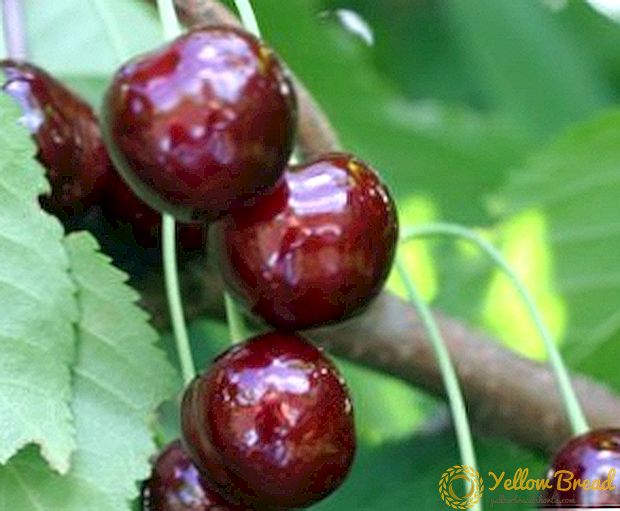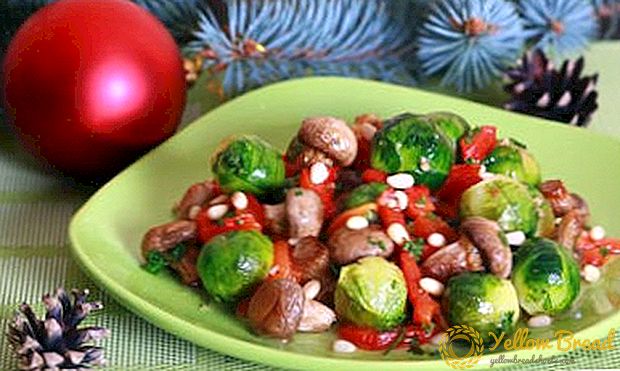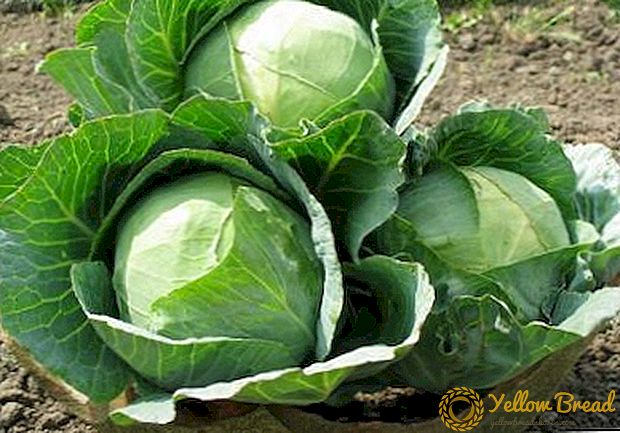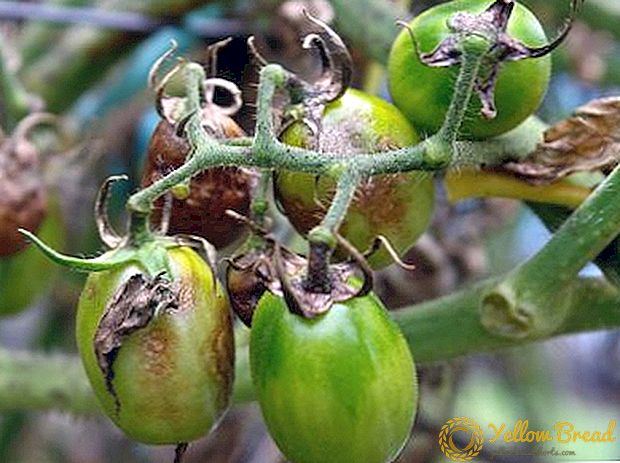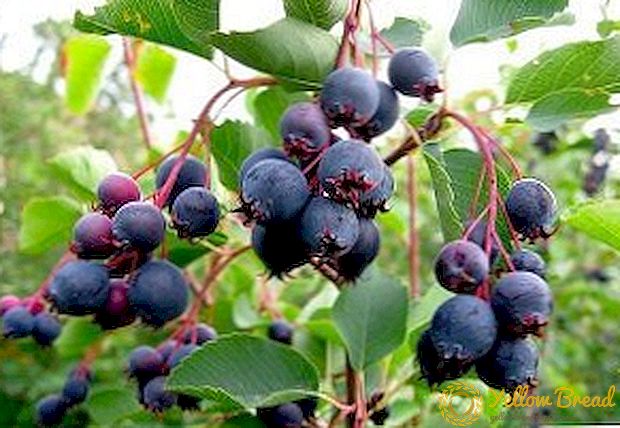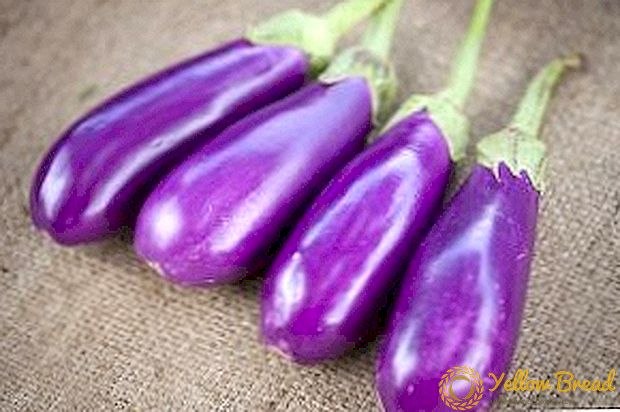 To determine the mass of the animal "by eye" capable of a few specialists. In order to quickly find out the approximate weight without special equipment, you can use the table, and also take into account the age of animals. How to do this with minimal inaccuracies, read on.
To determine the mass of the animal "by eye" capable of a few specialists. In order to quickly find out the approximate weight without special equipment, you can use the table, and also take into account the age of animals. How to do this with minimal inaccuracies, read on.
- Live weight and nutritional measures
- How to determine weight without weights
- Cattle
- Pigs
- Horses
- Useful tips and tricks
Live weight and nutritional measures
Live weight of farm animals is one of the most important indicators taken into account by breeders. It determines the amount of meat or milk production.
To make better use of biological growth reserves, it is necessary to know the patterns of age-related changes in animal mass and the rate of the genotype response to specific changes in living conditions.
When selling live weight to cattle, the price is affected not only by the weight itself, but also by the measure of the fatness of the animal. The fatness of cattle is determined during the inspection by probing the muscle tissue and fat deposition sites.
In cattle, fat is deposited, first of all, on the back of the body: near the tail, on the ischial tubercles, sacrum, then on the lower back, maklaki, ribs.The last thing fat in cattle is deposited on the neck and shoulder blades.
 For acceptance-delivery of animals for slaughter, their fatness is obliged to conform to existing standards.
For acceptance-delivery of animals for slaughter, their fatness is obliged to conform to existing standards.Individuals cattle divided into four age groups:
- adult cattle (bulls, cows, heifers from 3 years old and first-calf cows with receiving weight below 350 kg);
- first-calf cows less than three years old (with two permanent incisors) with receiving weight over 350 kg;
- juveniles from three months to three years (bullheads, castrates, heifers):
- young animals (from 14 days to three months).
Age groups, as far as they are, are divided into two categories.
The first category of adult cattle: satisfactory development of muscles, angularity of the trunk shape, poor selection of the shoulder blades,a small hip lift, spinous processes of the vertebrae and maklaki act softly, palpated subcutaneous fat deposits at the base of the tail and on the sciatic tubercles, oxen have a slightly fatty soft scrotum.
Second category of adult cattle: less satisfactory muscle development, angularity of the trunk, noticeable discharge of the shoulder blades, thigh plane, firmness and protrusion of the spinous processes of vertebrae, maklakov and sciatic tubercles, small subcutaneous fat deposits on the sciatic tubercles and lower back are possible, oxen have a lean fatty scrotum.  The first category of bulls: The rounded shape of the body, well-developed muscles, wide back, lower back and back, there is no selection of the bones of the skeleton.
The first category of bulls: The rounded shape of the body, well-developed muscles, wide back, lower back and back, there is no selection of the bones of the skeleton.
The second category of bulls: a small angular shape of the body, mediocre development of muscles, narrow back, chest, lower back and back, a small fit of the hips and shoulder blades.
The first category of first-calf cows: The rounded shape of the body, well-developed musculature, a small selection of the spinous vertebrae, sciatic tubercles and maklakov, palpated fat deposits at the base of the tail.
Second category of cows: a small roundness of the torso forms, mediocre development of muscles, protruding spinous processes of vertebrae, sciatic tubercles, maklaki, not palpated body fat.  Juveniles are divided into four classes:
Juveniles are divided into four classes:
- selective - more than 450 kg;
- the first - 400-450 kg;
- the second - 350-400 kg;
- the third is 300-350 kg.
The youngsters of the selective, first and second classes fall into the first category, and the young of the third class has its two categories.
First category - the rounded shape of the body, well-developed muscles, spinous processes of the vertebrae, sciatic tubercles and maklaki slightly protrude, palpated fat deposits in the tail.
Second category - a small roundness of the form of the body, mediocre development of muscles, withers, spinous processes of the vertebrae, sciatic tubercles, maklaki stand out, not palpated fat deposits.
The first category of young cattle (milkmen) - the muscles are acceptable, the spinous processes of the vertebrae do not protrude, the hair is smooth, the mucous membranes of the eyelids are white, the gums are white or with a light pinkish tinge, the lips, the palate are white or yellowish, and live weight is not less 30 kg.  The second category of young cattle (fed) - the muscles are less satisfactory developed, the spinous processes of the vertebrae slightly protrude, the mucous membranes of the eyelids, lips, gums, palate have a reddish tinge.
The second category of young cattle (fed) - the muscles are less satisfactory developed, the spinous processes of the vertebrae slightly protrude, the mucous membranes of the eyelids, lips, gums, palate have a reddish tinge.
First category - young pigs are bacon in the age group up to 8 months, weighing 80-105 kg, fed in specialized farms (farms) on rations that ensure the release of high-quality bacon pork.
Color is white, skin without pigment spots. The torso without interception behind the shoulder blades, the size from the occipital crest to the root of the tail is not less than 100 cm. Skin without tumors, hematomas, injuries affecting the subcutaneous tissue. The thickness of the fat over the spinous processes of the 6-7 th thoracic vertebrae is 1.5-3.5 cm.
Second category - young meat pigs (besides sows), weighing 60-150 kg with lard thickness 1.5-4 cm, as well as gilt weighing 20-60 kg with lard thickness not less than one centimeter.
Third category - Fat pigs, including sows and boars; age and weight are not limited, fat thickness is 4.4 cm or more.  Fourth category - hogs weighing over 150 kg and sows with a fat thickness of 1.5-4 cm.
Fourth category - hogs weighing over 150 kg and sows with a fat thickness of 1.5-4 cm.
Fifth category - Milk pigs weighing 4-8 kg. The skin is white or slightly pink, without tumors, rashes, hematomas, wounds, bites. Spinous processes of the spinal vertebrae and ribs do not stick out.
Depending on age, horses are divided into 3 groups: adults - from three years and more; young animals - from one to three years; foals - up to one year with a live weight of at least 120 kg.
Depending on the fatness, mature horses and young animals are divided into the first and second categories, and foals only into the first.
Adult horses first category - the muscles are developed perfectly, the forms of the body are rounded; chest,shoulder blades, loins, croup and thighs are perfectly executed; spinous processes of the spinal and lumbar vertebrae are not prominent; ribs unobtrusive and weakly palpable; fat deposits are perfectly palpable along the crest of the neck and at the root of the tail.  Second category - the muscles are developed mediocre, the shape of the body is slightly angular; chest, shoulder blades, back, croup, and thighs moderately fulfilled; the spinous processes of the spinal and lumbar vertebrae are able to protrude slightly; ribs are distinguishable, palpation is not captured by the fingers; small fat deposits are palpated along the neck ridge.
Second category - the muscles are developed mediocre, the shape of the body is slightly angular; chest, shoulder blades, back, croup, and thighs moderately fulfilled; the spinous processes of the spinal and lumbar vertebrae are able to protrude slightly; ribs are distinguishable, palpation is not captured by the fingers; small fat deposits are palpated along the neck ridge.
Youngsters of the first category - the muscles are developed perfectly, the forms of the body are rounded; the spinous processes of the spinal and lumbar vertebrae do not protrude; sciatic tubercles and maklaki slightly visible; subcutaneous fat deposits are palpated on the neck in the form of an elastic comb.
Second category - muscles are developed satisfactorily, angular forms of the body; spinous processes of the spinal and lumbar vertebrae, shoulder-shoulder joints,Maklaki and sciatic tubercles stick out a little; the ribs are noticeable, but are not caught by palpation; fat deposits on the crest of the neck and on the body are small.
Colts first category - the muscles are formed perfectly or satisfactorily, the shape of the body is round or slightly angular; shoulder-shoulder joints, scapula spine, spinous processes of the dorsal and lumbar vertebrae, maklaki and sciatic tubercles are able to protrude slightly; the ribs are slightly noticeable; small fat deposits are possible on the crest of the neck. 
How to determine weight without weights
The calculation of the weight of animals using measurements is based on the fact that it is proportional to its volume. A special measuring tape or stick is the tools needed when measuring, depending on the method of determining the body weight of the animal.
Cattle
Determining how much an average cow weighs for meat can be done in several ways.
Measurement of livestock to determine the weight is carried out on such parameters:
- the girth of the animal's chest is behind the shoulder blades, around the chest along a line that runs vertically from the end of the shoulder blade;
- oblique trunk length - measured from the front edge of the shoulder-shoulder joint to the posterior protrusion of the ischial tubercles.
 For these measurements in the table you can find the answer to the question of how to find out the weight of cattle without weights.
For these measurements in the table you can find the answer to the question of how to find out the weight of cattle without weights. 
Table for determining the approximate live weight of the calf 
Live weight is estimated in all groups of animals: young animals, cows, bulls producers.
Determination of live weight of cattle using the table of measurements gives an error in the range of 20-30 kg compared with weighing on the scales, and sometimes significantly less.
Please note that the weight of cattle animals varies with age not always smoothly and largely depends on the feeding conditions, and climatic and weather phenomena, various diseases and other factors have a great influence.
All this leads to the fact that in cattle the average daily mass fluctuations with normal content can sometimes reach 30-40 kg, or 5-7%. In order to know exactly how much a live cow weighs on average, it is necessary to adhere to the correctness of taking parameters.  When looking at the animal from the side, the limbs should cover each other.The head should be in a horizontal position with respect to the body and not be lowered or strongly raised upwards.
When looking at the animal from the side, the limbs should cover each other.The head should be in a horizontal position with respect to the body and not be lowered or strongly raised upwards.
Pigs
Know the weight of the pig is necessary to calculate the amount of feed given.
A full and adequate diet is the main secret of success in growing pigs, so it will be useful to calculate in advance the amount of feed. Piglets increase is an important indicator that every farmer should control.
In this case, growth retardation can be corrected with suitable nutrition and the introduction of additional vitamins and feed into the diet. When putting a pig in for meat, it is advisable to use electronic equipment, but for safety, you can at least estimate it at home.
For reliable information it is necessary to measure the animal. When calculating the need for two indicators: the length of the body and chest volume, measured under the shoulder blades. For convenience, you can use the tailoring tape. These pig weight tables vary in size with an accuracy of from 4 to 11%. 
The following table shows how to find out the weight of a pig without using weights by measurements.
 These measurements are combined and at the intersection of the horizontal and vertical values find the approximate mass of the animal.
These measurements are combined and at the intersection of the horizontal and vertical values find the approximate mass of the animal.
Determination using coefficients
This method can be called the most approximate, but it is suitable if you do not have the above table at hand. The dimensions of the pig in this case are taken in the same way as in the above table.
The calculation algorithm is extremely simple. Measurement data multiply with each other (dimensions in centimeters). Offhand determine the size of the fatness of the animal. The factors below define three stages:
- Sufficiently thin pig k = 162.
- Average fatness is k = 156.
- Normal and good fat content k = 142.
The result of multiplying the volume of the pig divided by the appropriate case coefficient.
 Equally important is another factor - the age of the animal. The breed will also influence this factor, it’s no secret that at the same age the Vietnamese and white pigs will be in completely different weight categories.
Equally important is another factor - the age of the animal. The breed will also influence this factor, it’s no secret that at the same age the Vietnamese and white pigs will be in completely different weight categories.Accurate orientations and weight-gaining tables simply do not exist, because the determining criterion will be a complete and rational nutrition, which it is possible to provide exclusively in farming conditions, and not for home use.
Horses
The question of how to determine the weight of a horse without weights is also very popular, and this can be done in several ways.
Special measuring tapes
Abroad, well-established production of special measuring tapes for three types of horses: draft horses, riding breeds and ponies. Using them to determine the weight of the animal is quite simple.
It is necessary to choose a measuring tape for a specific type of horse (there is a gradation in kilograms on them) and measure the breast volume where the cinch is located. The corresponding division will tell you the approximate weight of the horse.
 Sewing decimeter (according to measurements of the chest volume and the length of the horse)
Sewing decimeter (according to measurements of the chest volume and the length of the horse)Take the ordinary "decimeter", which is used in the sewing business. You need to make two measurements: the length of the horse and the volume of its chest.After that, use the formula: M (weight in kg) = V (breast volume in cm) × V (breast volume in cm) × L (length in cm).
This method is not suitable for foals, pregnant mares, very fat or too exhausted animals.
Matorina method This method is used for any type of horse. With it, you can easily calculate the weight of the horse. The formula is quite simple: Y = 6 × V - 620. Y is the weight of a horse in kg, and V is the chest girth in centimeters.
Durst method For this method, special factors are used, which depend on the type of horse. The formula is as follows: P = V × K, where P is the horse's mass in kg, V is the chest girth in cm, and K is the design factor. For heavy horses it is 3.5, for medium ones - 3.1, and for light ones - 2.7.  Determining the weight of a horse through its height By horse height is meant the distance from the ground to the highest point of the withers, which is determined by the plumb line and measured in centimeters. There are two ways to carry out such calculations.
Determining the weight of a horse through its height By horse height is meant the distance from the ground to the highest point of the withers, which is determined by the plumb line and measured in centimeters. There are two ways to carry out such calculations.
According to the first method, multiply the data in cm after the measurement by a special factor.
For horses that are of a working type and have a light build, it is equal to:
- for the fat - 2.58;
- for the average - 2.33;
- for the skinny - 2,10.
- for fat horses - 3.39;
- for the skinny - 3.06.
Horses of working type (heavy addition):
- obese - 13;
- skinny - 12.
- fatty - 10;
- average - 9;
- lean - 8.

Useful tips and tricks
The approximate dimensions of a pig need to be known for many manipulations: from the determination of the required portion, to the dosage of drugs. Providing accurate measurement is often not possible, because not everyone can acquire high-precision equipment.
That is why you can use the tips of our article and find the necessary value at least with a small error.
The data required for the calculation is minimal, usually it is the length of the body and the girth under the shoulder blades. Depending on the coefficient of fatness of the pig there are special formulas for calculating.
You can use the approximate weight gain for different breeds of pigs, as well as calculate the dependence of age and size.
The data can vary quite significantly depending on the conditions of detention and feeding. It is known that in summer and spring pigs gain weight much better, therefore it is more profitable to take pigs in spring.
For this perfect two-month-old piglets, which are much better able to digest solid food on their own. When buying very young piglets in the first month is better to feed them with milk.  In such a simple matter, as determining the weight of a horse with a measuring tape, there are some subtleties. The animal must be level during the measurement, so you cannot do without an assistant.
In such a simple matter, as determining the weight of a horse with a measuring tape, there are some subtleties. The animal must be level during the measurement, so you cannot do without an assistant.
In order to record possible changes in mass, it is desirable that the same person take measurements each time. Measurement error may occur due to wool and its thickness.
Therefore, the values that are obtained before and after shearing may vary significantly, and the weight of the horse will decrease only by the amount of cropped wool.
Although the determination of the weight of animals without the use of special equipment and gives approximate results, but knowledge of these techniques will help you out if a similar situation develops.

